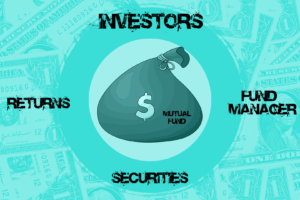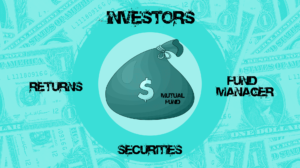Throughout this article, we’ll guide you through proven methods to build wealth and reach your retirement objectives. Whether you’re a novice investor or an experienced saver, you’ll discover valuable insights to enhance your retirement planning and secure your financial future.
Importance of Retirement Savings
Building retirement savings plays a vital role in achieving financial independence and maintaining comfort during retirement years. Without sufficient savings, you may face extended working years or dependency on others for financial support. Consequently, starting your savings journey early helps maximize your investment potential.
Moreover, retirement savings offer significant tax advantages through specialized retirement accounts. For instance, when you contribute to traditional IRAs or 401(k)s, you can reduce your taxable income by the contribution amount. Furthermore, these accounts provide tax-deferred growth on investments, meaning you won’t pay taxes until withdrawal during retirement.
While managing multiple financial priorities can be challenging, retirement savings should remain at the forefront of your planning. Although short-term goals like purchasing a vehicle or planning a vacation may seem pressing, maintaining focus on long-term financial security proves essential for future stability.
Types of Retirement Accounts
Several retirement account options exist to help you achieve your savings goals. The most popular choices include 401(k)s, traditional IRAs, Roth IRAs, and SEP IRAs. Each account type offers unique benefits and limitations, so understanding their features helps determine the best fit for your situation.
A 401(k) represents an employer-sponsored retirement plan allowing salary contributions to your account. Additionally, many employers provide matching contributions up to a specific percentage of your contribution. This matching benefit essentially offers free money, making it crucial to contribute enough to capture the full employer match.
Traditional IRAs function as individual retirement accounts with annual contribution limits of $6,000, or $7,000 for those over 50. These accounts offer tax-deductible contributions and tax-deferred investment growth. However, withdrawals during retirement incur regular income tax obligations.
Roth IRAs function similarly to traditional IRAs but require after-tax dollar contributions, eliminating tax deductions. However, this structure offers tax-free withdrawals during retirement. Additionally, Roth IRAs provide greater withdrawal flexibility since they don’t mandate required minimum distributions (RMDs) and allow penalty-free contribution withdrawals anytime.
For self-employed individuals and small business owners, SEP IRAs present an attractive option. These accounts permit contributions up to 25% of net earnings, with a substantial annual limit of $58,000. Like traditional IRAs, SEP IRA contributions remain tax-deductible, while investment gains grow tax-deferred.
Maximize Your Employer’s Matching Contribution
When your employer offers a 401(k) or similar retirement account, contributing enough to secure the full employer match becomes crucial. This matching benefit essentially provides free money, significantly boosting your retirement savings over time.
Consider this scenario: Your employer offers a 50% match on contributions up to 6% of your salary. With a $50,000 annual salary, contributing 6% ($3,000) results in an additional $1,500 employer contribution. Over time, these matching funds compound substantially, especially when factoring in investment returns.
However, remember that employer matches typically include vesting periods. Therefore, understanding your employer’s vesting schedule helps you plan effectively, ensuring you receive the full match benefits.
Determine Your Risk Tolerance
Investment success relies heavily on understanding and adhering to your risk tolerance level. This tolerance reflects your comfort with and ability to handle investment risks while pursuing higher returns.
Your age and investment timeline significantly influence appropriate risk levels. Younger investors often tolerate higher risk due to longer recovery periods, while those approaching retirement typically prefer conservative strategies to protect their savings.
Various resources, including online assessments and professional advisors, can help determine your risk tolerance. Maintaining honesty about your risk comfort level proves essential, as misaligned investment strategies can significantly impact your retirement savings.
Diversify Your Portfolio
Successful investment strategies rely heavily on diversification. This approach involves spreading investments across various asset classes, including stocks, bonds, real estate, and cryptocurrencies, effectively reducing overall portfolio risk.
Diversification works through the principle of offsetting potential losses. When certain assets underperform, others may excel, helping maintain portfolio stability. Moreover, this strategy enables investors to capitalize on various market conditions and opportunities.
The idea behind diversification is that if one asset class performs poorly, another asset class might perform well, which can help offset any losses. Additionally, diversification can help you take advantage of different market conditions and opportunities.
One effective way to diversify your portfolio is through mutual funds or exchange-traded funds (ETFs). These investment vehicles let you access a diverse mix of stocks, bonds, or other assets through a single investment. Moreover, many funds specifically track certain indexes or sectors, enabling targeted market exposure.
Invest in Low-Cost Index Funds
Investment fees can significantly reduce your long-term returns. Therefore, choosing low-cost index funds becomes essential for maximizing your investment potential.
Index funds mirror specific market benchmarks, such as the S&P 500 or Dow Jones Industrial Average. Their passive management approach results in lower fees compared to actively managed funds, allowing you to retain more of your investment gains.
Furthermore, index funds offer excellent diversification benefits by providing exposure to numerous stocks or bonds through one investment. This approach simplifies portfolio management while effectively reducing overall investment risk.
Consider Real Estate Investments
Real estate offers valuable portfolio diversification through potential passive income and long-term appreciation. Investors can access real estate through various methods, including rental property ownership, real estate investment trusts (REITs), or real estate crowdfunding platforms.
Before diving into real estate investing, thorough market research becomes crucial. Real estate investments typically require larger initial capital and involve more complexity than traditional investments. Therefore, understanding market dynamics and aligning investments with your goals is essential.
Don’t Withdraw Early
Early withdrawals from retirement accounts represent a common yet costly mistake. These premature distributions not only reduce retirement savings but also trigger penalties and tax consequences.
For instance, withdrawing from a traditional IRA before age 59 1/2 incurs a 10% penalty plus applicable taxes. Moreover, early withdrawals diminish future investment growth by reducing the power of compound interest.
To avoid early withdrawals, maintain an adequate emergency fund for unexpected expenses. This approach helps protect your retirement savings while ensuring financial stability.
Work with a Financial Advisor
When retirement planning becomes overwhelming, professional guidance can prove invaluable. Financial advisors help clarify investment options, assess risk tolerance, and develop comprehensive retirement strategies.
Additionally, advisors provide ongoing support and strategy adjustments. As retirement approaches, your investment approach may need modifications to reflect changing needs and objectives.
Conclusion
A successful retirement strategy requires careful planning and disciplined execution. By following these guidelines and maintaining a long-term perspective, you can build a robust retirement portfolio that supports your future financial needs.
Remember that retirement planning is a dynamic process that requires regular review and adjustment. Stay informed about market conditions, maintain investment discipline, and seek professional guidance when needed to optimize your retirement savings strategy.
Through consistent effort and smart investment choices, you can work toward achieving your retirement goals while managing investment risks effectively.
Building retirement savings plays a vital role in securing financial independence and ensuring a comfortable post-retirement life. Through strategic planning, you can optimize your retirement savings by exploring various retirement accounts, taking full advantage of employer matching programs, creating a diverse investment portfolio, and selecting cost-effective index funds.
Moreover, partnering with a qualified financial advisor helps create a tailored retirement strategy that aligns with your risk tolerance and evolving needs. By maintaining dedication to your savings goals and implementing effective strategies, you can confidently manage your retirement savings and build a secure financial future.
If you are looking for more investment information to prepare for your retirement here is a good post worth reading: Top Dividend Stocks for Long Term Investment













